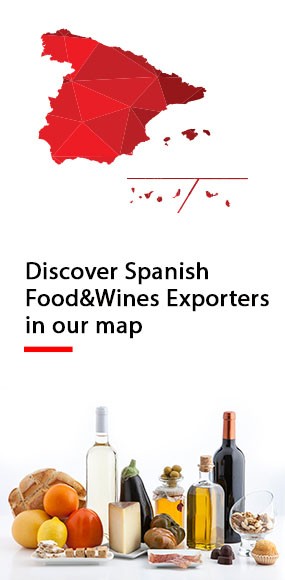.png.transform/rendition-xs/image_image%20(1).png)
Bodegas Roda: Innovation in Rioja
In 1987, when Mario Rotllant and Carmen Daurella came to La Rioja, they were determined to put their dream of establishing their own bodega into practice. The objective was clear from the start: to make a unique Rioja, different from the rest. Their enthusiasm quickly spread to the team who became the backbone of the project: Agustín Santolaya, who took the reins, Isidro Palacios, who took care of the vineyards and Carlos Díez, who handled the oenology and the bodega. Currently Bodegas Roda wines are drunk in more than 50 countries around the world
They chose Haro, the birthplace of wines under DOCa Rioja, to start their project. They established themselves in the neighbourhood of ‘la Estación’ (the Station) and built an unparalleled bodega, a cross between the traditional deep hollows dug into the rock and the most cutting-edge technology. Unfortunately, the choice of soils was more difficult. Their idea was to generate their grape yield from one single estate, in the French “châteaux” style, but there were no estates to be found that had all of the characteristics they were looking for. Finding the right vines, as well as studying the soils and the landscape, took many months of analysis. In the end, they chose 17 different plots for their vineyards with common characteristics: old deeply rooted vines in poor soils with a great vine-growing tradition, each individually capable of producing great wines.
With the River Ebro winding its way in capricious curves at the foot of the vineyards, the Obarenes hills to the fore and the sierra de Cantabria to the east, these three natural elements are key factors in the region’s climatological make-up: Mediterranean, Continental and Atlantic, three climates for the same vineyards. This diversity of climates, together with the different levels of sun exposure on the hills that form the region, is one of the aspects that forge Bodegas Roda’s character.
The vines they chose were also something out of the ordinary. At a time when most bodegas were opting for young vines, Agustín Santolaya and Isidro Palacios made the sturdy decision to work with old vines. The chosen vineyards were more than 30 years old with very low yields, exactly what they were looking for: plants with long roots deeply embedded in the soil, extracting mineral nuances that they could never obtain from young vines.
Wines from old vines
Consequently, almost 10 years of hard work were necessary before the first wine worthy of the Roda name saw the light of day; the year was 1996. Nowadays Bodegas Roda wines are among some of the best wines in the world according to the most important national and international experts, as acknowledged by the US publication ‘Wine Review Online’ and 'Wine & Spirits Magazine', the German edition of ‘Gault Millau’ and the UK 'Decanter'. ‘Roda’ (known as ‘Roda II’ up until the 2001 vintage), ‘Roda I’ and ‘Cirsion’ are the three crown jewels of a bodega that exports 50 percent of its produce to more than fifty countries, the most important being: the US, the United Kingdom, Switzerland, Germany, Puerto Rico, Mexico, Colombia and Brazil.
Winery designed to measure of its wines
The bodega at Roda is another of this winemaker’s most appreciated assets. It boasts a unique design and the very best technical facilities. The building itself is designed to optimise winemaking and houses the complete process, from the selection table to bottling and labelling.
There are 17 French oak vats at the bodega and the grapes from each estate are processed individually in each one of them. The aim is to recuperate the nuances created in every vineyard in the most gentle and efficient way possible.
Between the months of November and December, malolactic fermentation takes place in the vats, which is carried out in the most pioneering installations in the world designed exclusively for the process: a well-ventilated air-conditioned room with underfloor heating, which allows for the fermentation of 1,000 barrels at the same time. Once finalised, the north façade of the room, equipped with stained-glass windows, is opened up allowing the cold winter air to naturally stabilise the wine.
Respect for the natural environment
In addition to this, sustainable viticulture is the motto that governs vineyard management at Bodegas Roda. Respect for the environment is an asset both for the quality of the wine and for the protection of nature. As a consequence, at Roda they avoid, as much as possible, the use of chemicals that could harm the vine or the soil. Disease and pest control are carried out with the help of two systems: first, the design of the vines themselves which guarantees that the rootstock is kept aired, and second, the use of alternative biological products in pest control.
All of this loving care is inherited by the four wines made at the bodega, whose main variety is Tempranillo. 'Sela' is the last one in the market. An easier and more accesible wine than their big brothers, it maintains the winery's spirit of best quality. Among the big brothers, ‘Roda’ is the easiest to appreciate, a full-bodied red with some very light fruity highlights. Its aromas await the taster on the rim of the glass. A successful wine; suitable with meals due to its wide spectrum of matching possibilities both with fish and meats.
‘Roda I’ is a more settled wine, with a better structure and deeper and darker fruit sensations, richer in minerals and more complex. It is a contemplative and meditative wine whose style is marked by black plums and cocoa. Its aromas emerge like a continuous thread from the very bottom of the glass and expand in the nose.
The third wine, ‘Cirsion’ is made from select vines whose grapes have a high concentration of tannins. Although it is the bodega’s top-of-the-range wine, it has a shorter aging period than ‘Roda I’ and it is not bottled as a reserva. It is made entirely from Tempranillo.
Scientific research, development and technological innovation
On another note, it is also worth mentioning Bodegas Roda’s interest for R&D projects. In 1998, within the framework of its business strategy, the company designed a sponsorship policy for scientific research, development and technological innovation as a means towards continuous improvement in competitivity and growth, resulting in the development of consecutive three-yearly R&D plans.
The projects have two clearly defined lines of action: On the one side, work is carried out in the field of technology to develop machinery adapted to the company’s individual needs. And on the other, research is carried out in the fields of biology and chemistry in collaboration with universities and other institutions, all in the pursuit of sustainable viticulture which, as mentioned, is one of the foundation stones of this now emblematic bodega.
Corimbo, when the landscape of Ribera del Duero can be drunk in a transparent way
The company began a new project in DO Ribera del Duero, Bodegas La Horra, in the begining of the 21st century. The goal here is to produce wines that are a true reflection of the landscape of the Ribera del Duero from Burgos, bringing elegance and freshness to the characteristic strength of the Tinta del País in the region. The 50 hectares of vineyards are cultivated with the utmost respect for the environment, along the lines of organic viticulture. Two wines are elaborated in Bodegas La Horra: ‘Corimbo’ and ‘Corimbo I’.
Coming from vines of 25 years on average, ‘Corimbo’ is a wine of good intensity, with red and black fruit, mainly cherries and blackberries. The wood is very good integrated with the fruit respecting and providing nice creamy notes. Also appears aromatic plants of pine. On the palate, the fruit is present with a feeling of freshness of ripe cherry, blackberry notes of blackberries and fine tannins. On the other hand, ‘CorimboI’, from vines over 50 years, is characterized by black fruit. The nose is deep and highly complex, with notes of chocolate and sweet spice herbs culminating in the finest sense of violets. While suggesting the taste of black and red fruit, in the mouth feels like air, delicate, expressive, large, elegant, fresh and complex.
They chose Haro, the birthplace of wines under DOCa Rioja, to start their project. They established themselves in the neighbourhood of ‘la Estación’ (the Station) and built an unparalleled bodega, a cross between the traditional deep hollows dug into the rock and the most cutting-edge technology. Unfortunately, the choice of soils was more difficult
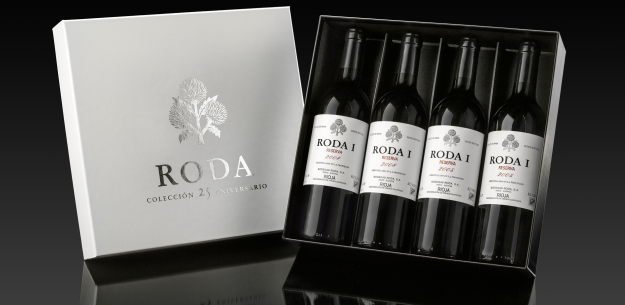
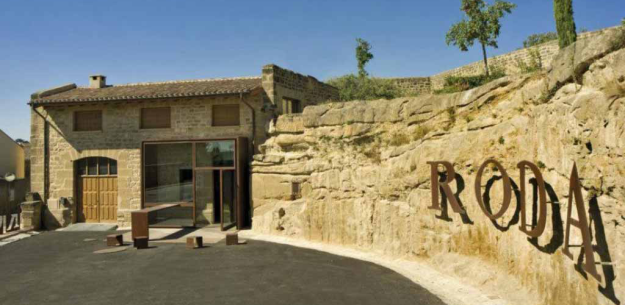
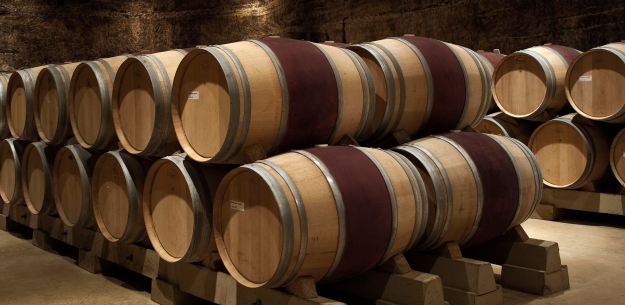
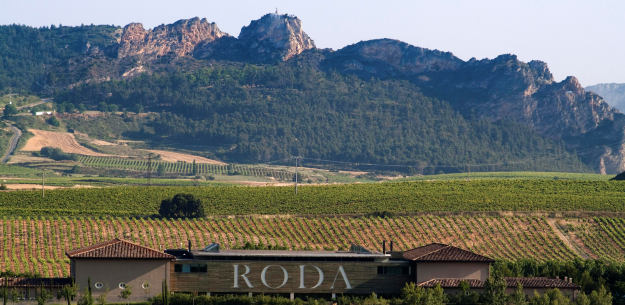
- Image 1
- Image 2
- Image 3
- Image 4


